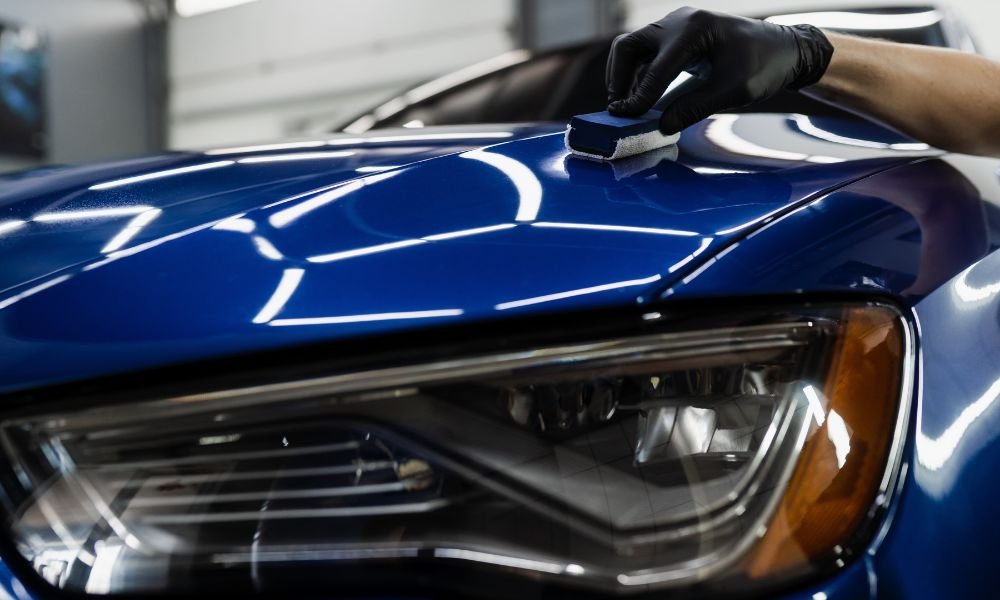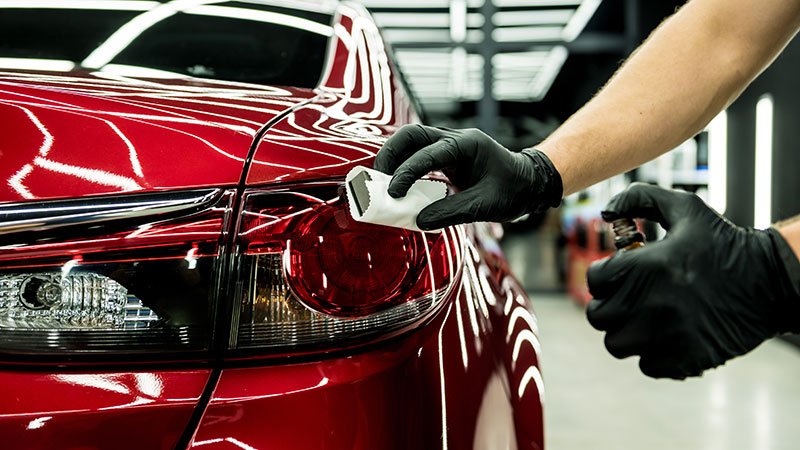High-End Auto Detailing at Conforti Auto and Marine Detailing Ceramic Coating
High-End Auto Detailing at Conforti Auto and Marine Detailing Ceramic Coating
Blog Article
Just How Describing Porcelain Covering Improves the Durability of Your Auto's Paint
Ceramic finish has arised as an essential innovation in vehicle describing, supplying a resilient service for protecting the integrity of your car's paint. Recognizing the intricacies of how ceramic layer jobs and its benefits over conventional wax can give valuable understandings for automobile owners.
What Is Ceramic Layer?
Comprehending the protective advantages of ceramic finishing starts with identifying its make-up and functionality. Ceramic layer is a liquid polymer put on the outside surfaces of automobiles, mainly created to improve and secure vehicle paint. The crucial part of this finishing is silicon dioxide (SiO2), which is originated from natural products like sand. This substance creates a solid chemical bond with the manufacturing facility paint, producing a protective layer that is both resilient and hydrophobic.
The layer's application includes careful preparation of the car's surface area, which have to be without pollutants, scrapes, and blemishes to ensure optimum bond. As soon as applied, the ceramic finishing treatments to develop a rigid guard that can endure various ecological elements, including UV rays, chemical spots, and oxidation.
Furthermore, ceramic finishings are not just surface-level therapies; they penetrate the paint to supply a long lasting protection. This capability prolongs the life-span of the automobile's aesthetics while maintaining its value over time. Understanding these essential facets of ceramic coating is necessary for vehicle proprietors seeking reliable services for paint conservation and enhancement.
Advantages of Ceramic Covering
The advantages of ceramic covering extend far past its basic safety attributes. Unlike typical wax or sealers, ceramic finishes produce a strong bond with the automobile's paint, enabling it to endure environmental hazards such as UV rays, acid rainfall, and roadway salt.
Additionally, ceramic layers use hydrophobic residential or commercial properties, indicating they ward off water and contaminants. This particular not just makes the car less complicated to clean but additionally reduces the frequency of cleaning, saving both effort and time for car proprietors. The glossy surface created by the coating protects against dust and gunk from adhering, improving the cars and truck's total sanitation.
In addition, ceramic coatings enhance the depth and clarity of the paint, offering automobiles a glossy surface that is aesthetically striking. This visual improvement even more adds to maintaining the car's resale value, as a properly maintained outside is a significant marketing factor for possible buyers. In general, the benefits of ceramic coating make it a worthwhile investment for anyone looking to safeguard and enhance their automobile's paintwork.
Exactly How Ceramic Coating Works

The coating's hydrophobic residential or commercial properties push back water and our website dirt, avoiding the accumulation of gunk externally. This not just makes the automobile much easier to tidy yet also decreases the likelihood of scrapes and swirl marks created by conventional cleaning approaches. Furthermore, the ceramic layer acts as a guard against UV rays, which can trigger fading and oxidation over time.
As soon as cured, the finishing exhibits remarkable resistance to chemicals, consisting of road salts, bird droppings, and tree sap, which can otherwise harm the paint. The longevity of ceramic coverings can last for a number of years, depending on aspects such as upkeep and ecological conditions. Generally, the chemical bonding process of ceramic finishes offers a durable defense that preserves the honesty and appearance of a car's paintwork.
Comparing Ceramic Finishing to Wax
Contrasting ceramic coating to traditional wax reveals substantial distinctions in efficiency and long life. While both products aim to safeguard an automobile's paint, their structures and durability established them apart. Wax, normally made from natural carnauba or synthetic products, provides a momentary guard that usually lasts only a few weeks to a couple of months, relying on ecological conditions and upkeep regimens.
On the other hand, ceramic coatings are advanced remedies composed of inorganic products that bond chemically with the car's paint. This develops a robust, semi-permanent layer of protection that can withstand for several years. Consequently, ceramic coverings offer remarkable resistance to UV rays, chemical spots, and physical abrasion, significantly lowering the threat of oxidation blog here and fading.
Furthermore, the hydrophobic residential properties of ceramic finishings ensure that water grains up and rolls off the surface area, making it a lot more tough for dirt and gunk to adhere. This convenience of cleansing is a remarkable advantage over wax, which can bring in dirt and need constant reapplication. Inevitably, for vehicle proprietors seeking lasting protection and improved aesthetic appeal, ceramic finishes provide a much more reliable choice to traditional wax products.
Maintenance Tips for Longevity
Correct upkeep is vital for maximizing the long life of a ceramic finish. Utilize a pH-balanced auto hair shampoo to avoid breaking down the covering, and stay clear of automated auto cleans with rough brushes that can trigger micro-scratches.
To maintain the hydrophobic residential or commercial properties of the ceramic layer, consider using a maintenance spray or booster especially designed for ceramic layers every few months. This will enhance the protective layer and improve water beading.
Additionally, avoid exposing the coated surface area to severe ecological problems whenever feasible. Vehicle parking in shaded locations or using a vehicle cover can stop UV damages and contamination from bird droppings, tree sap, or industrial fallout.
Lastly, evaluate the finish occasionally for indicators of wear or damage. If you see a reduction in hydrophobic behavior, it might be time for a specialist reapplication. By sticking to these upkeep tips, vehicle proprietors can significantly expand the life and performance of their ceramic finish, making sure that their automobile's paint remains protected and aesthetically appealing for many years ahead.
Final Thought

Report this page